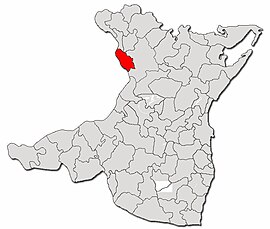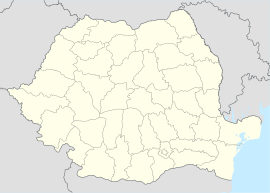
Northern Dobruja is the part of Dobruja within the borders of Romania. It lies between the lower Danube River and the Black Sea, bordered in the south by Southern Dobruja, which is a part of Bulgaria.

Hârșova is a town located on the right bank of the Danube, in Constanța County, Northern Dobruja, Romania.

Apulon was a Dacian fortress city close to modern Alba Iulia, Romania. The Latin name of Apulum is derived. The exact location is believed by many archaeologists to be the Dacian fortifications on top of Piatra Craivii, Craiva, Cricău, about 20 km north of Alba-Iulia.
Aelius Catus was a Roman commander near the Danube who, according to Strabo's geography, transplanted 50,000 Getae from what is now Muntenia in Romania far to the south of Danube, in Moesia.

Sucidava was a Dacian and Daco-Roman city situated in Corabia, Romania, on the north bank of the Danube. It developed from the 270s AD and especially after the construction of Constantine's Bridge the northern side of which it protected.

Gârliciu is a commune in Constanța County, Northern Dobruja, Romania, containing the village with the same name.

Argidava was a Dacian fortress town close to the Danube, inhabited and governed by the Albocense. Located in today's Vărădia, Caraș-Severin County, Romania.

Acidava (Acidaua) was a Dacian and later Roman town and fort on the Olt river near the lower Danube. The settlement's remains are located in today's Enoşeşti, Olt County, Oltenia, Romania.
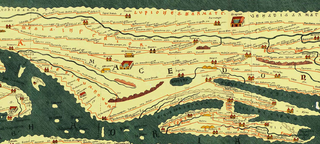
Aizis was a Dacian town mentioned by Emperor Trajan in his work Dacica. Located at Dealul Ruieni, Fârliug, Caraș-Severin, Banat, Romania.
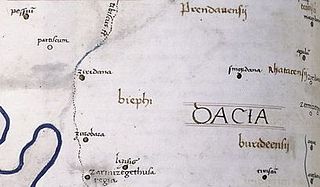
Zurobara was a Dacian town located in the northwest of today's Romanian Banat. It was positioned by the Tibiscus (Timiș) river, north of Sarmizegetusa Regia and south of Ziridava.
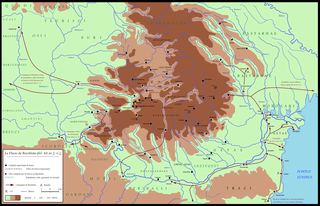
Dava was a Geto-Dacian name for a city, town or fortress. Generally, the name indicated a tribal center or an important settlement, usually fortified. Some of the Dacian settlements and the fortresses employed the Murus Dacicus traditional construction technique.

Amutria was a Dacian town close to the Danube and included in the Roman road network, after the conquest of Dacia.
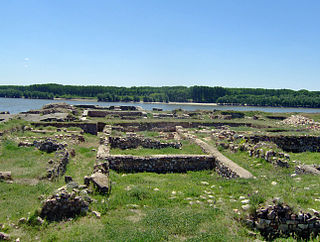
Capidava was originally an important Geto-Dacian centre on the right bank of the Danube. After the Roman conquest, it became a civil and military centre in the province of Moesia Inferior and part of the defensive frontier system of the Moesian Limes along the Danube.
Rusidava was a Dacian town mentioned in Tabula Peutingeriana between Acidava and Pons Aluti, today's Drăgășani, Vâlcea County, Romania.

Sacidava was an ancient Getic settlement on the Danube, between Durostorum and Axiopolis, located near the modern village of Izvoarele, in Romania.

Ziridava was a Dacian town located between Apulon and Tibiscum, mentioned by Ptolemy in the area of the Dacian tribe of Biephi.

Carsium was a fort in the Roman province of Moesia in the 1st century AD whose remains are still visible. It was part of the defensive frontier system of the Limes Moesiae along the Danube.

Potaissa was a legionary fortress and later a city in the Roman province of Dacia, located in today's Turda, Romania.
